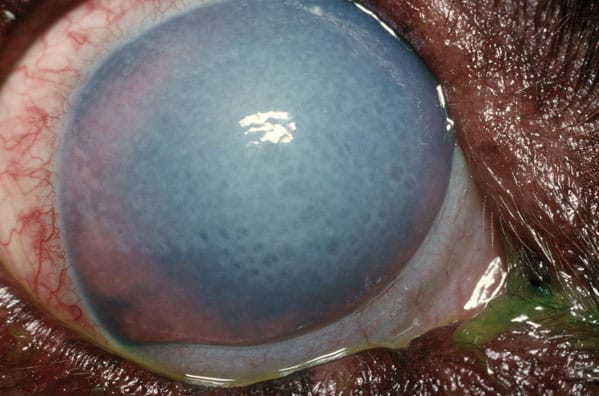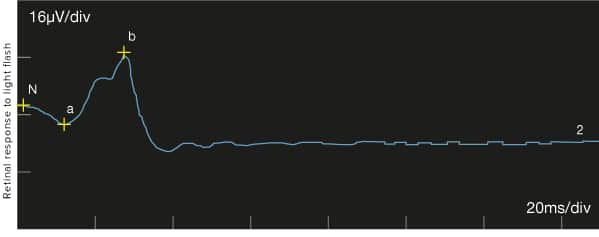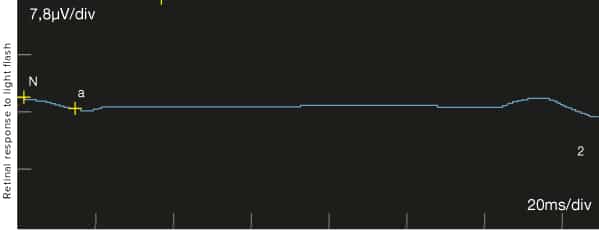
What is Sudden Acquired Retinal Degeneration Syndrome (SARDS)?
Sudden Acquired Retinal Degeneration Syndrome or SARDS is a disease which leads to sudden and irreversible blindness. At the time of writing the disease has only been seen in dogs. The condition affects the retina, which is the structure at the back of the eye that functions like the film in a camera. Without retinal function the affected animal cannot see. In the early stages of the condition the retina looks normal, even though it is no longer working.
How does the vet diagnose SARDS?
To diagnose the disease, an electroretinogram (ERG) has to be performed. This is an electrical test of the function of the retina. The test is not unlike an electrocardiogram (ECG), which is done on animals and people to check the function of the heart. The test requires special equipment, which is designed to detect the tiny electrical impulses that occur at the back of the eye in the retina. During the examination the retina is stimulated with light and electrodes record the retinal response. If the retina is working, a positive waveform can be obtained on the screen of the ERG machine. Dogs normally need sedation or a general anaesthetic for this test, as it can only be performed if the patient is not moving. However, in some very relaxed dogs the test can be performed without sedation. The test is not painful and does no harm to the eye or to the patient.
What does an ERG (electroretinogram) tracing look like?
Normal dog positive ERG (normal retinal function)
Dog with SARDS extinguished ERG (absent retinal function)
Why did my dog get SARDS?
A The underlying cause for SARDS is currently not completely understood. However, recent investigations suggest that SARDS is an autoimmune disease. This means that the immune system, which normally fights off infections, instead attacks the body’s own tissue due the development of so called “auto-antibodies”. Predisposed breeds include Dachshunds and Miniature Schnauzers and the disease seems to be more frequent in middle aged to elderly female dogs.
Is there any treatment available for my dog?
To date, there is no successful treatment available for SARDS. A clinical research group treated some dogs with a human drug called IVIG. Some of the treated dogs regained guidance vision but a full recovery was not achieved in any of the cases. However, this new treatment can lead to sudden death due to an allergic reaction and therefore we do not recommend it.
Is my dog in any pain?
No, SARDS is not a painful disease.
Could my dog show any other signs apart from the blindness?
Yes, about 50% of affected dogs drink excessively and need to urinate more. Laboratory investigations on blood samples can show elevated liver enzymes and cortisol (steroid) levels. The reason for these changes is not clear but treatment or a special diet is normally not necessary.
My dog seems to be confused. Will that become better and what can I do to help?
It is normal for your dog to be confused during the first weeks after becoming blind. This will improve with time as he or she becomes used to relying on other senses such as those of smell and hearing. To help your dog to adjust, it is sensible to avoid moving furniture and to mark important areas (e.g. put doormats inside doorways to the garden so that your dog can feel where the exits are). Try to avoid any dangerous situations (e.g. always walk your dog on a lead) and use more verbal commands. Affected animals will often seek a closer relationship with their owner and can use other dogs in the same household for guidance. However, they can become more nervous of dogs they don’t know.
If you have any queries or concerns, please do not hesitate to contact us.
Arranging a referral for your pet
If you would like to refer your pet to see one of our Specialists please visit our Arranging a Referral page.

